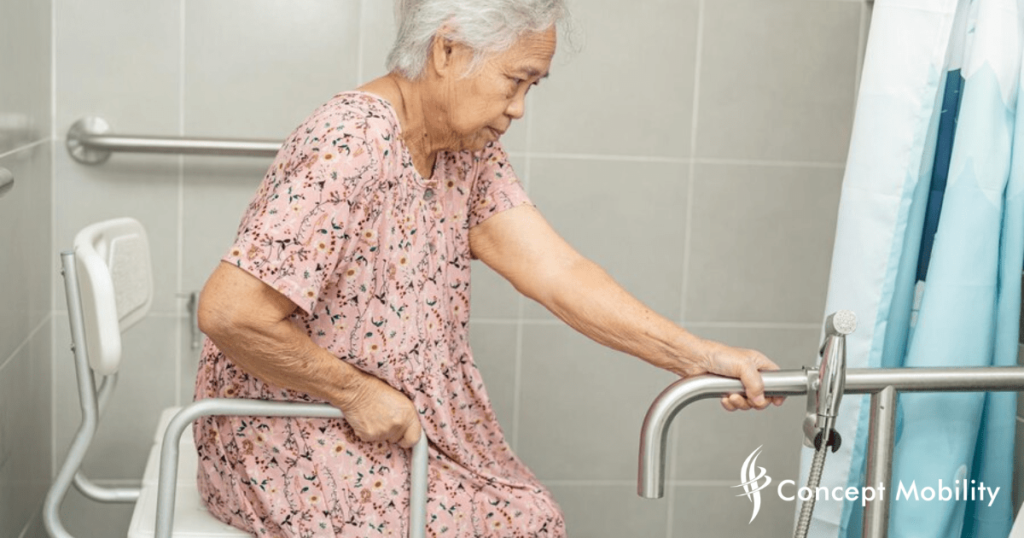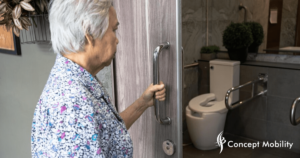
Why Choose Walk-in Shower for the Elderly and Disabled Access?
As we age or face physical challenges, bathing can become increasingly difficult, for the elderly and disabled, traditional bathtubs can pose safety hazards and accessibility issues. This is where walk-in showers offer a safer and more accessible bathing solution. We will explore why walk-in showers are an excellent choice for elderly and disabled access, along with essential considerations and benefits.
Importance of Walk-In Shower for Elderly and Disabled Access
For elderly individuals and those with disabilities, maintaining personal hygiene is essential for health and well-being. However, traditional bathtubs present numerous challenges, including high steps, slippery surfaces, and cramped spaces. Walk-in shower for elderly and disabled offer a more accessible bathing option, with low or no thresholds, grab bars, and spacious interiors. These features make it easier and safer for elderly and disabled individuals to bath lifts independently and confidently.
Key Features of Walk-In Shower for Elderly and Disabled
Low or No Thresholds
Walk-in showers typically have low or no thresholds, allowing easy entry and exit without stepping over high edges. This eliminates the risk of tripping or falling, making them ideal for individuals with mobility issues or those using mobility aids such as wheelchairs or walkers.
Grab Bars and Handrails
Many walk-in shower for enclosures disabled are equipped with grab bars and handrails strategically placed for support and stability. These features assist individuals with balance or mobility challenges, allowing them to safely move around the shower.
Spacious Interiors
Walk-in shower for disabled persons often features spacious interiors, providing ample room for maneuverability and accommodating mobility aids such as shower chairs or benches. The extra space allows for comfortable and convenient bathing experiences without feeling cramped or confined.
Non-Slip Flooring
Safety is paramount in the walk-in shower for elderly and disabled access, which is why many models come with non-slip flooring. This textured surface helps prevent slips and falls, even when the shower floor is wet, providing added peace of mind for users and their caregivers.
Benefits of Walk-In Showers for Elderly and Disabled Access
Enhanced Safety
The safety features of a walk-in shower for the disabled, including low thresholds, grab bars, and non-slip flooring, significantly reduce the risk of accidents and injuries. This is especially important for wet rooms for the elderly individuals and those with disabilities who may be more susceptible to falls.
Increased Independence
By providing a more accessible bathing solution, walk-in showers empower elderly and disabled individuals to bathe independently and confidently. This promotes dignity and self-reliance, enhancing the overall quality of life.
Ease of Use
Walk-in showers are designed with user convenience, featuring easy-to-operate controls, spacious interiors, and accessible entry points. This makes them suitable for individuals of all abilities, including those with limited mobility or dexterity.
Versatility
Walk-in showers come in sizes, styles, and configurations to suit different needs and preferences. Whether it’s a compact corner unit or a luxurious roll-in shower, there’s a walk-in shower solution to fit virtually any space and accommodate various accessibility requirements.
Considerations When Choosing Walk-In Showers for Elderly and Disabled Access
Bathroom Layout and Space Constraints
Before installing a walk-in shower, it’s essential to consider the layout and size of the bathroom. Ensure there is enough space to accommodate the shower and that it can be easily accessed from other areas, such as bedrooms or living areas.
Budget and Financing Options
Walk-in showers vary in price depending on size, features, and materials. Consider your budget and explore financing options, such as grants or assistance programs, to help cover the installation cost if needed.
Walk-in showers can be a significant investment, but several financing options are available to help make them more affordable. Here are some options to consider:
Grants and Assistance Programs
Many government and non-profit organizations offer grants or financial assistance programs to help cover the cost of home modifications for elderly and disabled individuals. These programs may provide funding for walk-in shower for disabled and other accessibility features.
Home Equity Loans or Lines of Credit
If you own your home, you might borrow against the equity you’ve built up through a home equity loan or line of credit. These loans typically have lower interest rates than personal or credit cards, making them a cost-effective financing option.
Specialized Financing Programs
Some manufacturers or retailers of walk-in shower for elderly and disabled offer financing programs specifically tailored to their products. These programs may offer competitive interest rates and flexible repayment terms, making it easier to afford the upfront cost of installation.
Insurance Coverage
In some cases, health insurance or long-term care insurance policies may cover the cost of home modifications such as walk-in showers. Check with your insurance provider to see if you’re eligible for coverage and what documentation is required to submit a claim.
Installation and Maintenance
Choose a reputable contractor with experience installing walk-in showers for elderly and disabled access. Ensure that the shower is installed correctly and meets safety standards. Additionally, consider maintenance requirements and choose materials that are durable and easy to clean.
FAQs about Walk-in Shower for Elderly and Disabled
Are walk-in showers suitable for individuals with severe mobility limitations?
Yes, walk-in showers can be customized with grab bars, handrails, and shower chairs to accommodate individuals with a wide range of mobility challenges.
Can walk-in showers be installed in small bathrooms?
Yes, there are compact walk-in shower designs specifically tailored for small bathrooms, including corner units and space-saving configurations.
Are walk-in showers easy to clean and maintain?
Yes, walk-in showers are typically easier to clean than traditional bathtubs, with fewer nooks and crannies where dirt and grime can accumulate.
Do walk-in showers increase the value of a home?
Yes, walk-in showers are a desirable feature for many homebuyers, particularly those looking for accessible and age-friendly amenities.
Are any financial assistance programs available to help cover installing a walk-in shower?
Yes, various government assistance programs, grants, and financing options are available to help elderly and disabled individuals afford home modifications such as walk-in showers.


